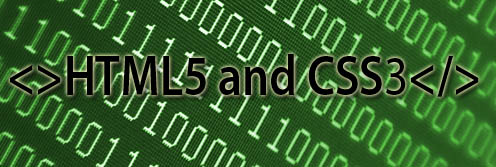Fundamentals of Web Development
Select a date to register.
- Online Training
- $1,795.00
- Monday, June 23, 2025 (Guarantee to Run )
- Wednesday, September 24, 2025
- Monday, December 22, 2025
- Wednesday, March 18, 2026

Course Description
In this class you will learn how to code HTML and CSS, the coding languages used to create webpages. We focus on best practices for structuring the content of your webpages with HTML and then styling the content with CSS.
Once you have the basics under your belt, you will move on to real-world page layout. You will learn text and link styles, centered page layout, background images, CSS-based navigation, forms, uploading files via FTP, and much more. We will provide you with the content and prepared images for use in these projects but this training will give you hands-on practice coding websites from scratch all the way through uploading them to make them live.
The course workbook can be completed in any code editor. In class, you can use either Sublime Text or Dreamweaver in Code View.
Who Needs to Attend
Anyone who will need to build or manage a website in the near future. This course can be taken using either a Windows or Mac computer. You will need to download several web browsers and a simple text editor such as Notepad on Windows or TextEdit on a Mac. Past that, no special software is needed.
Course Book
Noble Desktop Web Development
Prerequisites
None
Course Outline
Section 1
Coding Basics: Intro to HTML Syntax
- The HTML, Head, Title, and Body Tags
- Headings, Paragraphs, and Lists
- Strong and EM Tags
- The Doctype Declaration (DTD)
- The Lang Attribute
- The Meta Tag and the Unicode Character Set
Coding Links
- Anchor Tags and Hrefs
- Linking to Other Websites
- Linking to Pages Within a Website
- Opening a Link in a New Browser Window
Adding Images
- The Break Tag
- The Image Tag and Source Attribute
- Using the Width, Height, and Alt Attributes
- Using Horizontal Rules
Section 2
Intro to Cascading Style Sheets (CSS)
- The Style Tag
- Tag Selectors
- Class Selectors
- Font-Size, Font-Family, Color, and Line-Height Properties
- Hexadecimal Shorthand
- The Span Tag
The Div Tag & Basic Page Formatting
- Creating Divisions with the Div Tag
- Setting a Div Width
- CSS Background-Color
- Adding Padding Inside a Div
- Centering Content
- CSS Borders
- CSS Shorthand and the DRY principle
Using Browser Developer Tools
- Opening the DevTools in Chrome
- Editing HTML in the DevTools Elements Tab
- Enabling, Disabling, and Editing CSS in the DevTools
- Using DevTools to Fine Tune Your CSS
HTML5 Semantic Elements
- The Outline Algorithm
- The Header, Nav, Aside, and Footer Elements
- Understanding Articles and Sections
- The Main Element
- The Figure and Figcaption Elements
- Validation
Fluid Layout & Max-Width
- Making Images Fluid
- Divs for Presentational Style
- Assigning IDs to Divs
- Assigning Max-Width to Content
Section 3
Revolution Travel: Real World Layout
- Organizing Content into Semantic Sections
- Adding Images
- Tagging Headings
The Box Model
- What is the Box Model?
- Setting Div Width
- Fixing a Display Issue in Internet Explorer
- Setting Page Defaults for Font Styles
- Padding and Margin Spacing
Floats & Images
- Adding a Hero Image
- Fluid Images
- Floating Images
- Class Selectors
- Margins
Coding Links: Images, Email, & Named Anchors
- Anchor Tags and Relative URLs
- Wrapping Links Around Images
- External Links (Using the Target Attribute)
- Spambot-Resistant Email Links
- Links Within a Page
Section 4
Styling Links
- Styling the Anchor Tag
- The :link, :visited, :active, and :hover Pseudo-Classes
- LoVe/HAte: Ordering Link Styles
Styling the Navigation
- Semantically Correct Navigation
- Overriding Default List Styles
- CSS Navigation Styles
- Using Descendant Selectors
Shared CSS and Centering Content
- Moving Embedded Styles into an External CSS File
- Sharing Styles Across a Site
- The Text-Align Property
- Centering Divs
Setting the Viewport Meta Tag
- The Viewport Meta Tag
- Device-Width
- Initial-Scale
- Maximum-Scale
Section 5
HTML and CSS Wireframe
- Stacking Sections
- Linking to an External Stylesheet
- Using DevTools to Unpack the Box Model
CSS Background Images
- HTML Images vs. CSS Background Images
- Background-Position
- Background-Repeat
- Background-Size
Fun with Fonts
- How to Use Google Fonts
- Safe Fallbacks in the Font Stack
- Improving Line-Height and Margin for Legibility
Hipstirred Layout: Fine Tuning with Box Model
- Removing Default Page Margin
- Setting a Max-Width
- Outer and Inner Wrappers
- The Difference Between ID and Class Selectors
Section 6
CSS Buttons and Floats
- Styling Semantically Correct Navigation
- Floats for Layout
- Float Insert Position
- Simple CSS Buttons
- CSS Border-Radius
- Reusing Class Selectors
Hipstirred: Hi-Res Images
- Retina or HiDPI Graphics (@2x Images)
- Setting HTML and CSS Size to Half the Image's Native Size
- Hardware Pixels vs. Reference Pixels
Uploading to a Live Website via FTP
- What is FTP?
- Using an FTP Client
- Going Live
Form Basics
- The Form Tag
- The Input and Label Elements
- Name and ID Attributes
- The Button Element
- Styling the Form